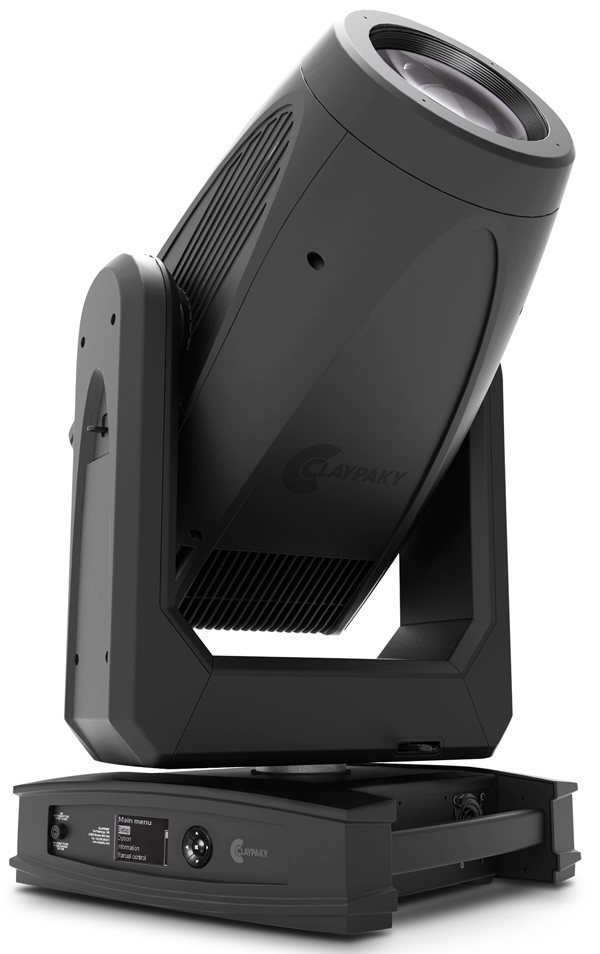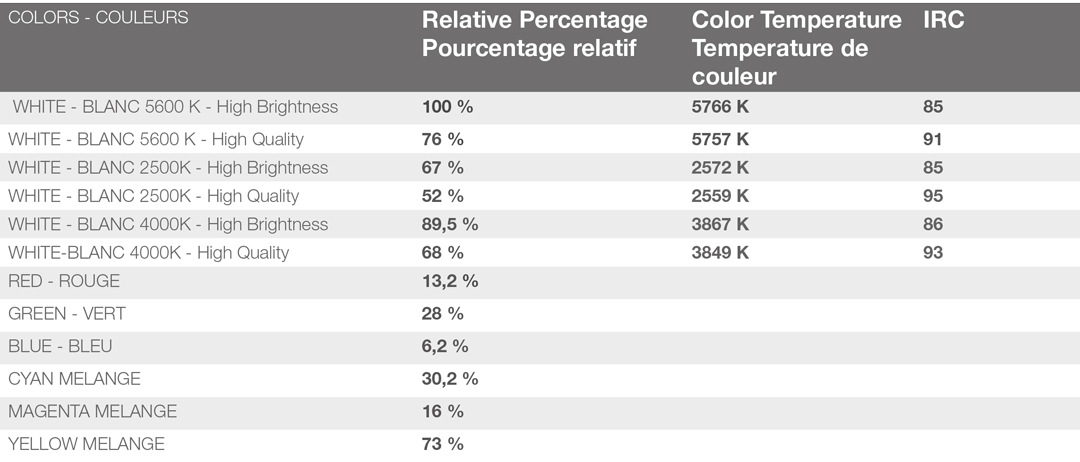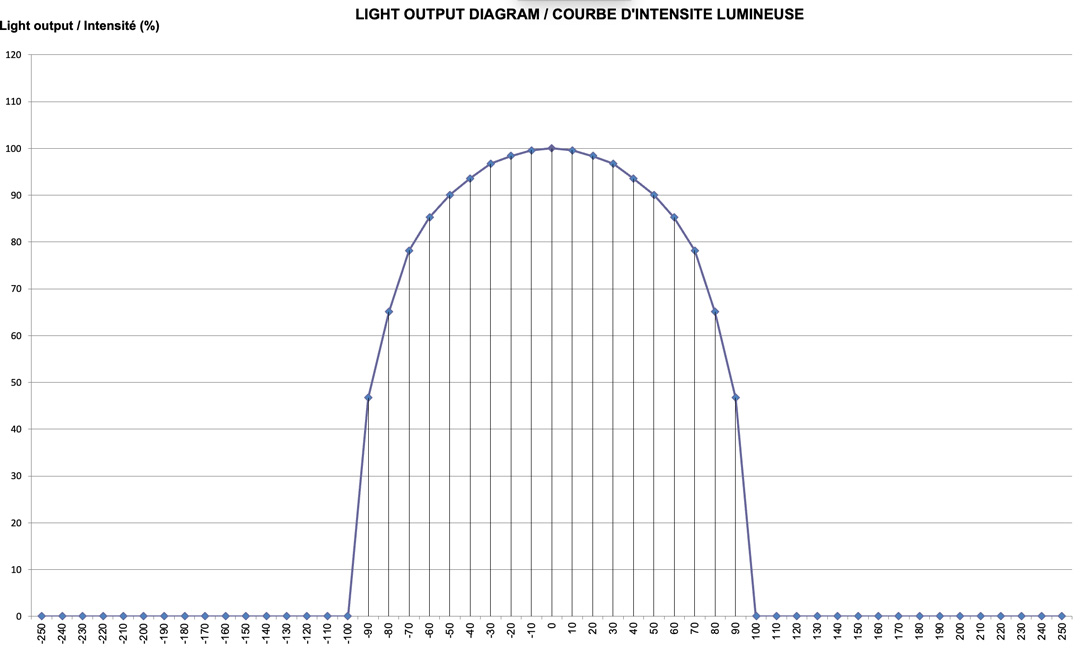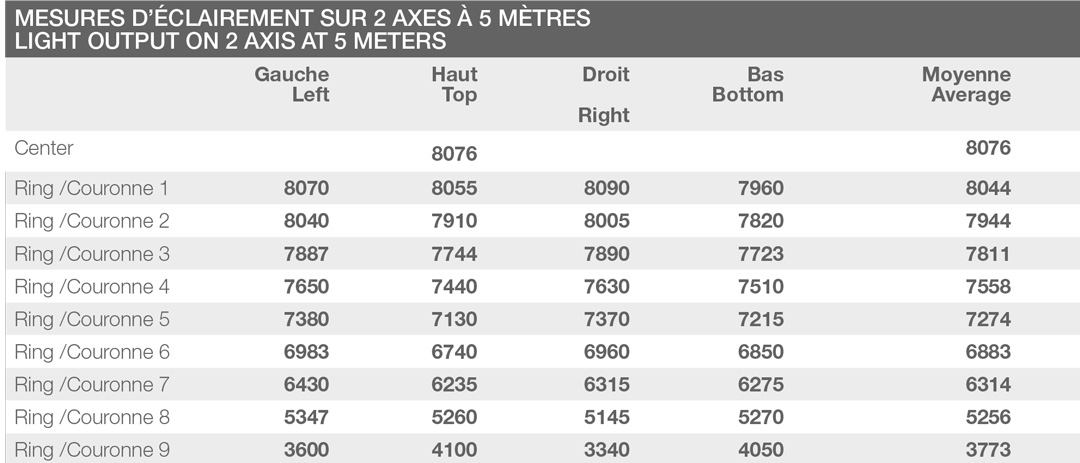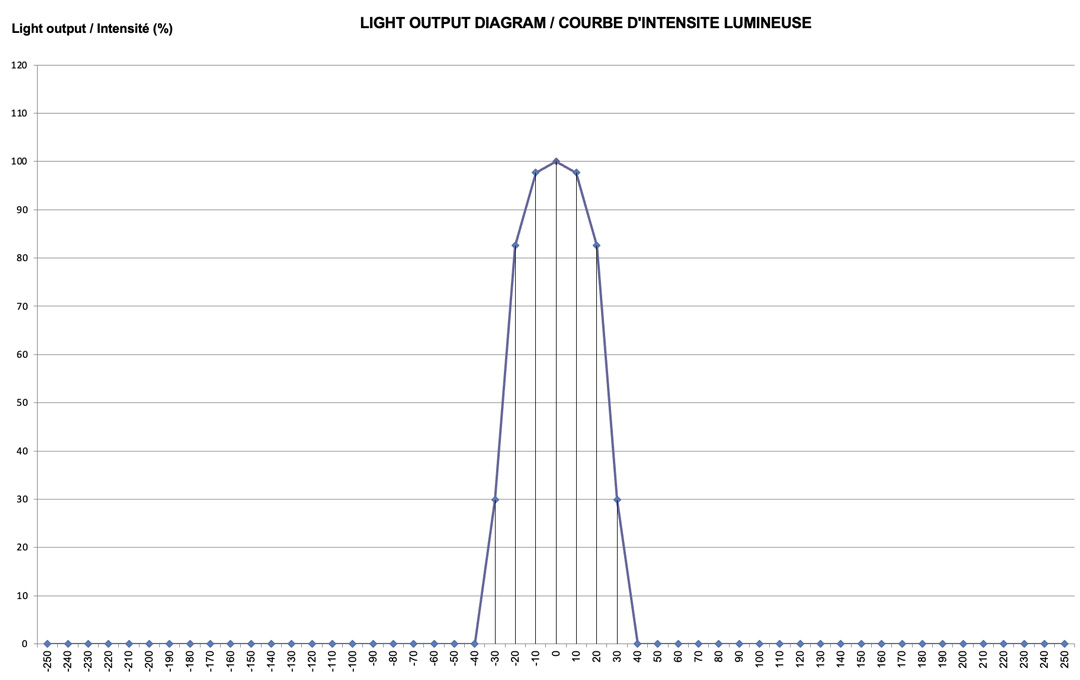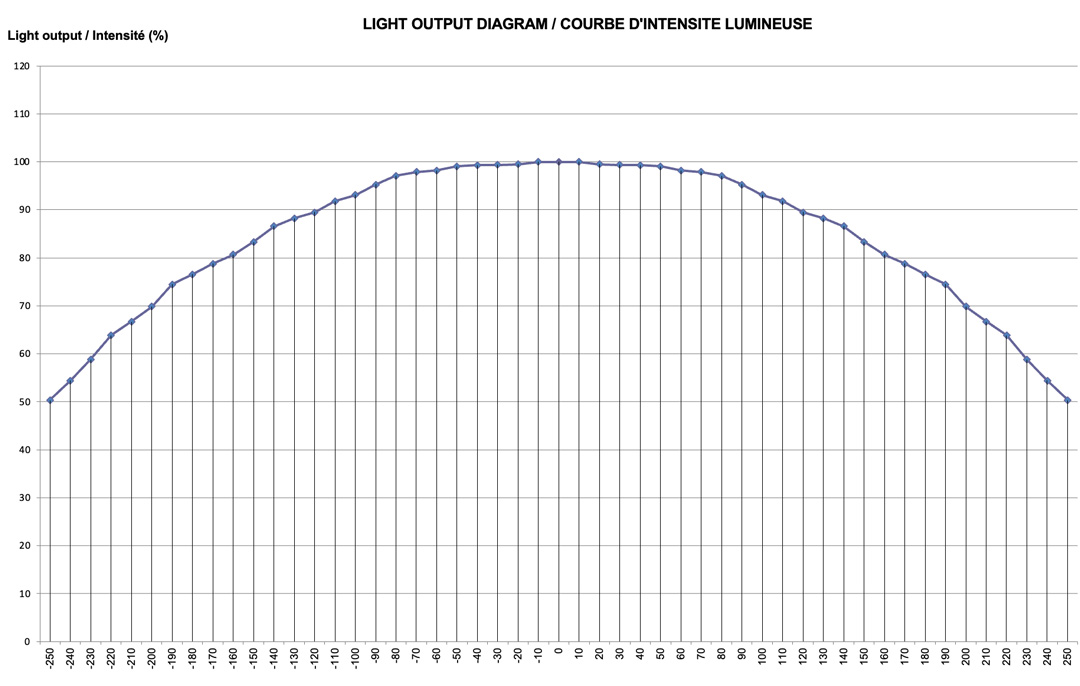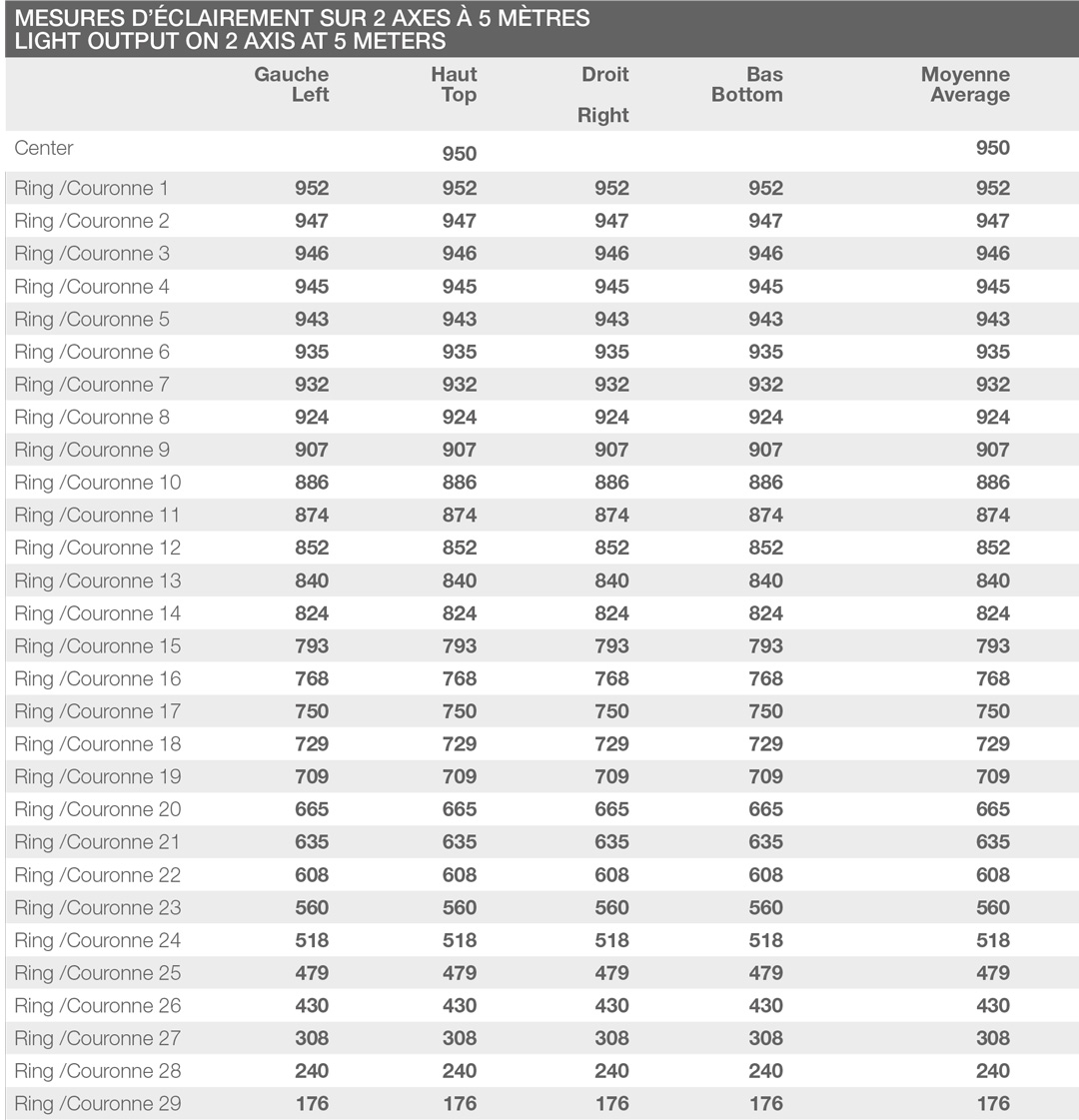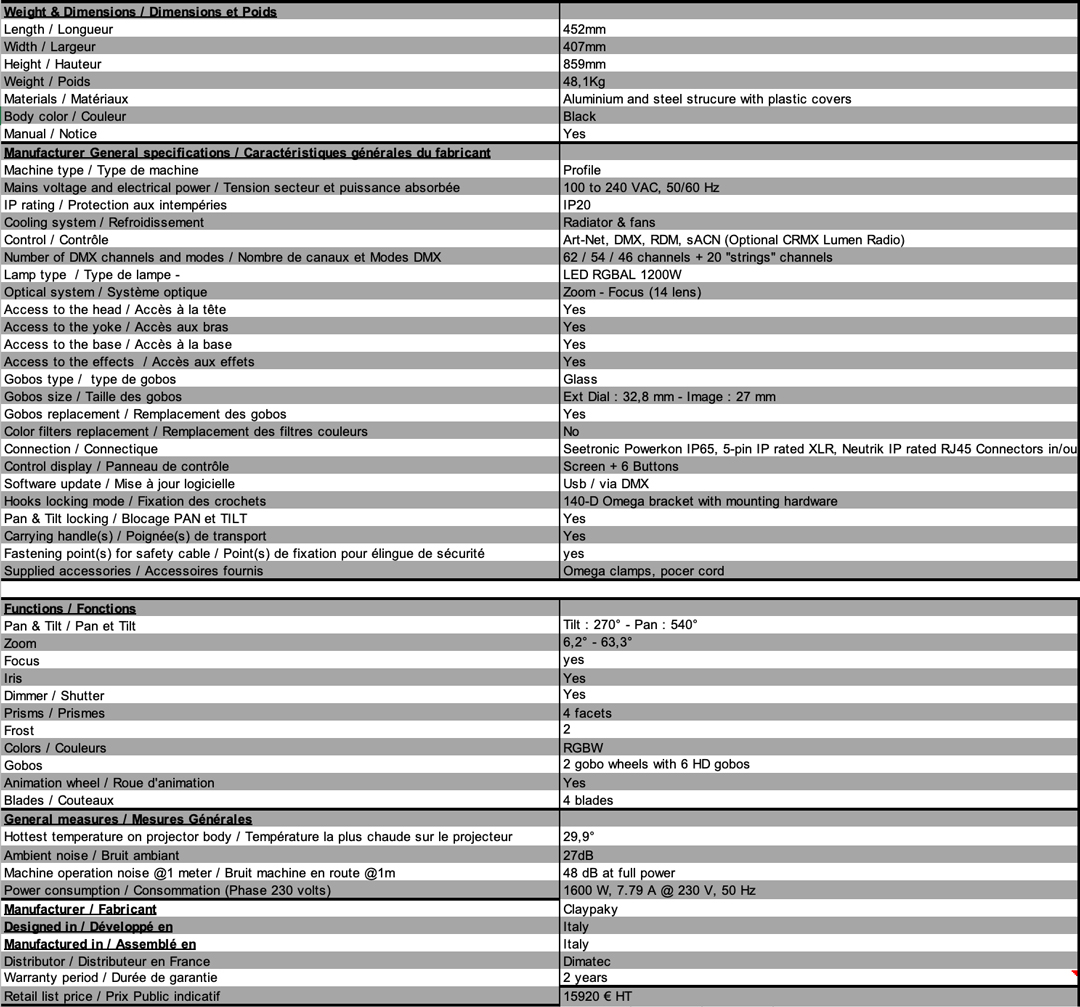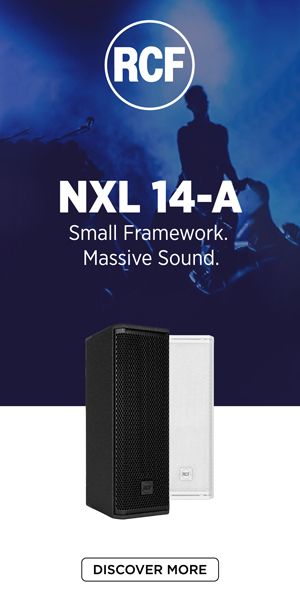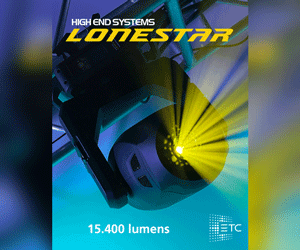The Rhapsodya represents a significant advancement in the Italian manufacturer’s Profile additive synthesis range. Aimed to meet the rigorous requirements of operas and theaters, in terms of colorimetric precision and quality of light, this new Profile is positioned at the top of the multispectral range initiated by Synfonya with a source twice as powerful. We tested it in the “La Boutique du Spectacle” studio.
Since 1976, Claypaky has been developing and manufacturing high-tech lighting solutions for stages around the world. Renowned for its innovations, the brand has forged its reputation with iconic products like the Sharpy and the B-EYE family and continues its creative rise under the aegis of the manufacturer Arri, which it joined in 2022.
The real feat lies in mastering this power and it is not so much the quantity of light that impresses, but its quality. The engineers therefore had to take on a major challenge by working on optics and color management, as well as its operating silence. But the main advantages of the Rhapsodya are exceptional colorimetry and an extra-wide zoom!
The design
If the Rhapsodya impresses with its performance, its design is not to be outdone. Faithful to the visual identity of Claypaky with its characteristic base unit, it displays an imposing silhouette with the diameter of the optical path (80 mm) and the amplitude of the zoom. This results in a weight of 48 kg requiring handling by two people. This is a choice made by Claypaky, which favors the quality of light of a fixture intended mainly for permanent installations.
Its aluminum and steel construction, reinforced by oversized thermal protection, ensures its durability. The design of the base unit and its display could benefit from a new update that we have already seen appear on the new products in the range.
Whites and colors
The Rhapsodya color system deserves special looking into. Its RGBAL technology (Red, Green, Blue, Amber, Lime) offers a complete and nuanced color palette with lots of power (this is the advantage of additive synthesis) and its AccuTune system (an internal firmware algorithm) , guarantees precise control of the LED engine.
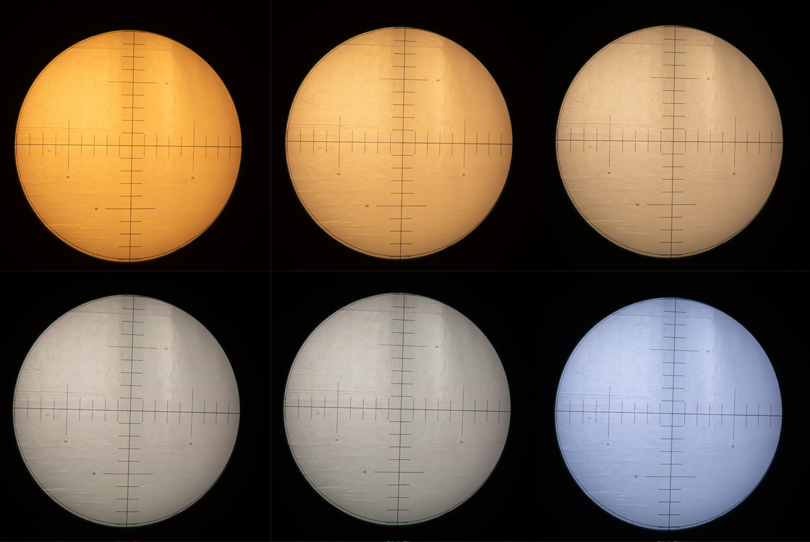
The software also gives access to an adjustment of green shades (±green) and a palette of whites adjustable from 2500 K (warm white) to 10,000 Kelvin (cold white). It will allow lighting designers to precisely reproduce any atmosphere, from the warmest sunsets to the coldest lunar atmospheres.
The CRI (color rendering index) is adjustable (simply via the fixture’s DMX control menu), which allows you to select High Brightness or High Quality modes as needed to favor either maximum luminous flux or a faithful reproduction of skin tones, costume colors and other stage sets to be lit in white. All during a show.
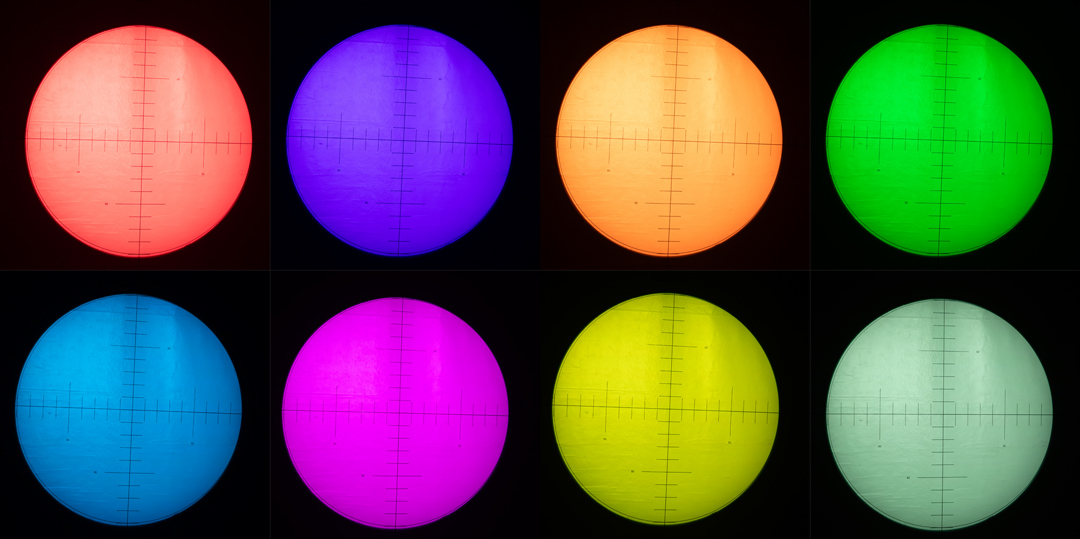
A color wheel with static filters allows quick access to three primary saturated colors such as red, blue, and green in association with the additive synthesis.
Another “ColorString” feature that independently controls the engine’s four LED strips introduces a new level of color graphics and effects. This feature allows you to create complex and dynamic light displays. The lighting design possibilities are then unlimited and unique.


Optics
The Rhapsodya stands out with an exceptional zoom range which we measured from 6.8° to 62°. To do this, it uses an optical system of 80 mm in diameter, a system with 14 high-efficiency lenses and a large output lens of 180 mm in diameter.
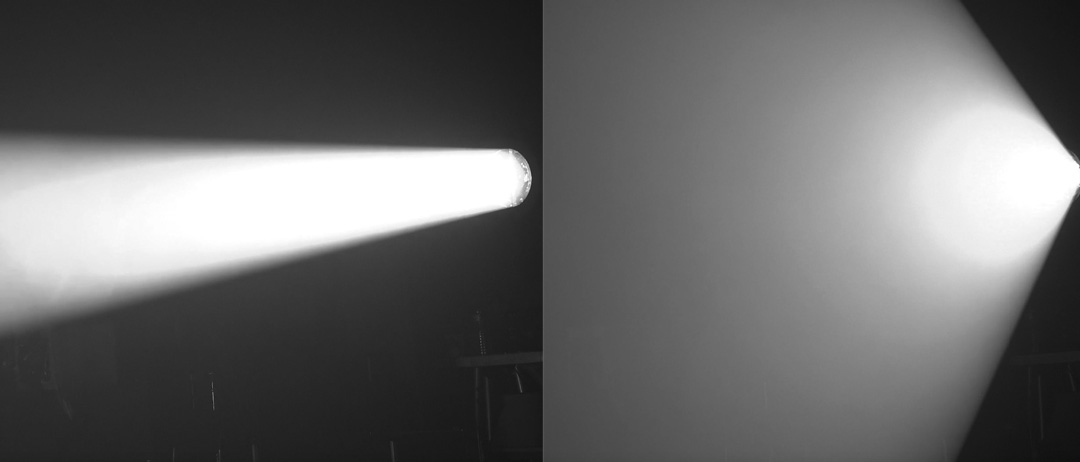
This fixture therefore offers great flexibility for short and medium throw configurations, whether it is to focus on a precise detail or to illuminate a large area. Combined with advanced features like gobos and prism, this zoom makes Rhapsodya a versatile fixture, perfectly suited to various scenographic needs, while minimizing light output loss.

The framing module
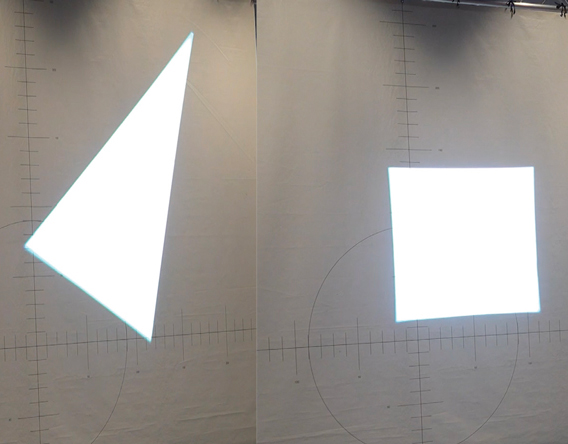
The Rhapsodya integrates a system of 4 motorized blades/shutters on two focal planes called ACCUFRAME™, guaranteeing clean and ultra-precise cutting/shaping of the beam. The system responds to two operating modes.
The standard mode in which each blade covers half of the beam and the Extended mode which allows the total closure of the beam and their orientation with a tolerance of 0.12°.
The effects parameters
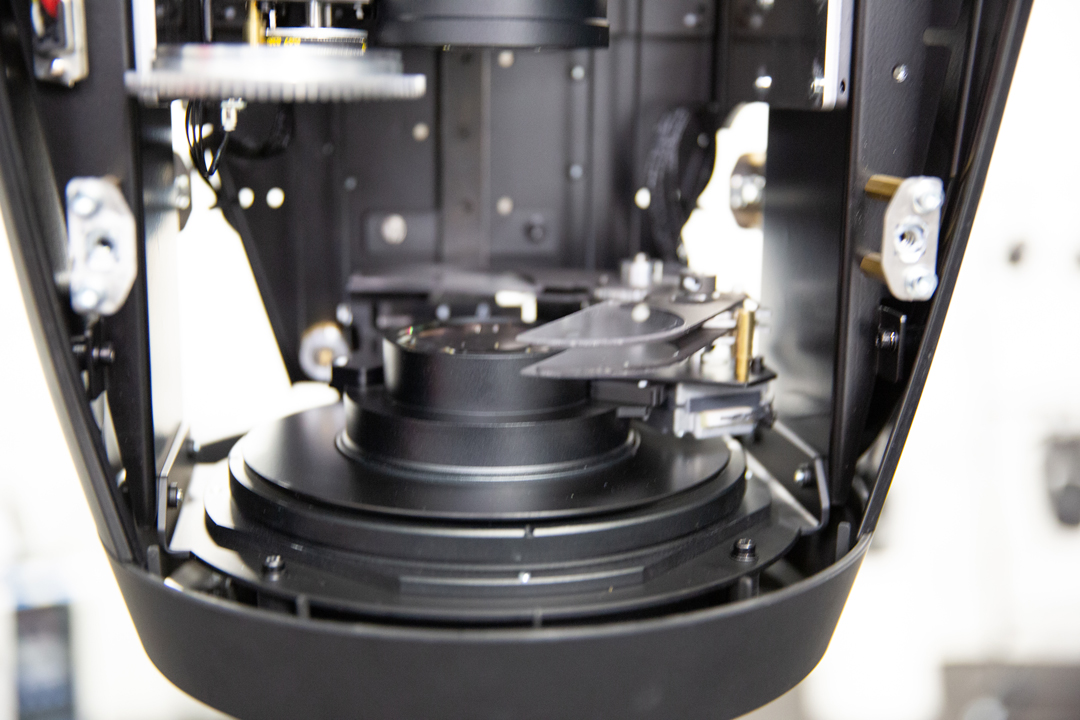
The Rhapsodya has two independent frost blades. An interchangeable and gradual Light 1° to soften the edge of the beam without significantly altering the intensity or shape, particularly useful for softening projections. A dense 5° static and gradual also for a wash effect.
The motorized iris has 16 blades for precise and rapid adjustment of the beam opening, it will be used to tighten the beam even more in Beam mode or to create pulses or strobe effects and vary the atmospheres. We measured at 5 meters a minimum diameter of 22 mm.

The fixture has 2 wheels of 6 rotating HD gobos in treated glass to keep the same colorimetry with or without. They are of course indexable and interchangeable and offer patterns that can be used in projection and volumetric patterns. The module cannot be dismantled, but the gobos can be easily removed one after the other by turning the wheel after removing the cover.
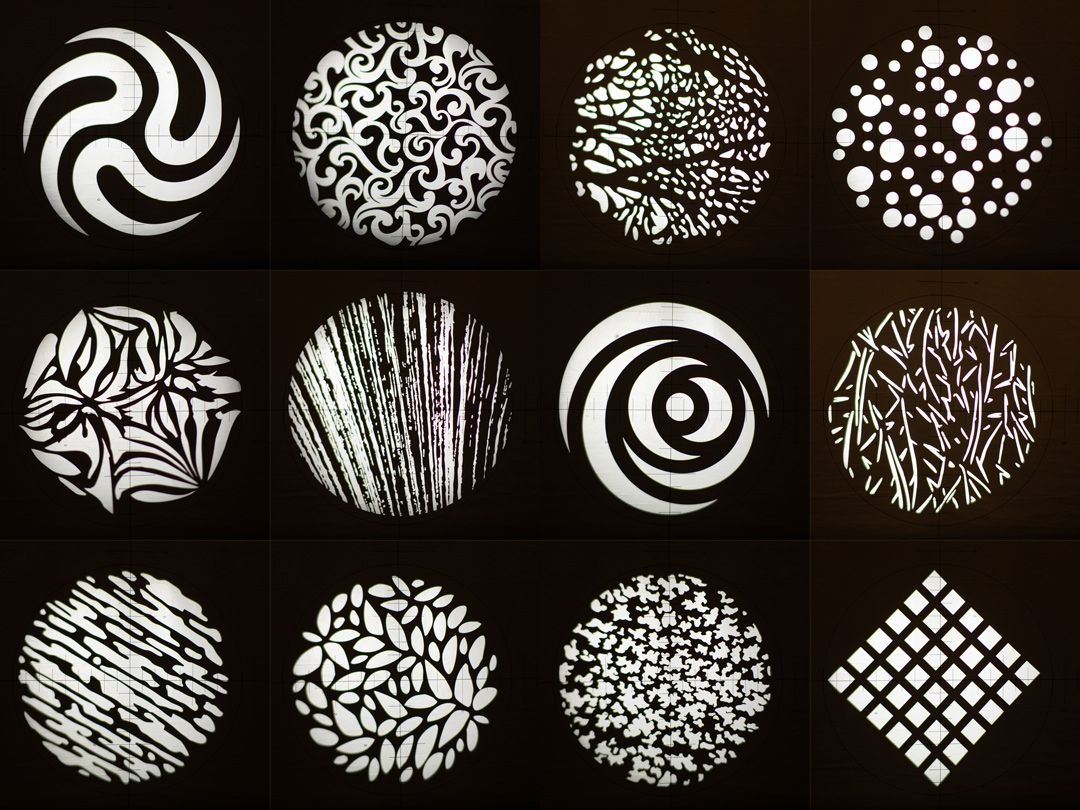
The fixture also includes an aluminum animation wheel with continuous rotation and variable speed and a 4-facet rotating prism with variable speed. The shutter is obviously an electronic shutter with variable speed.
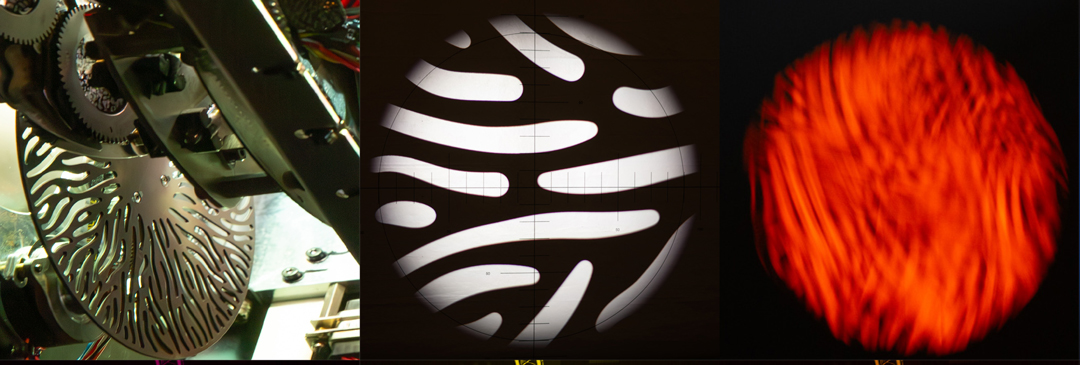
We have drawn the “Square” curve which shows for a nice progression from 0 to 100% which was not the case for the “Linear” curve which will soon benefit from a software correction.
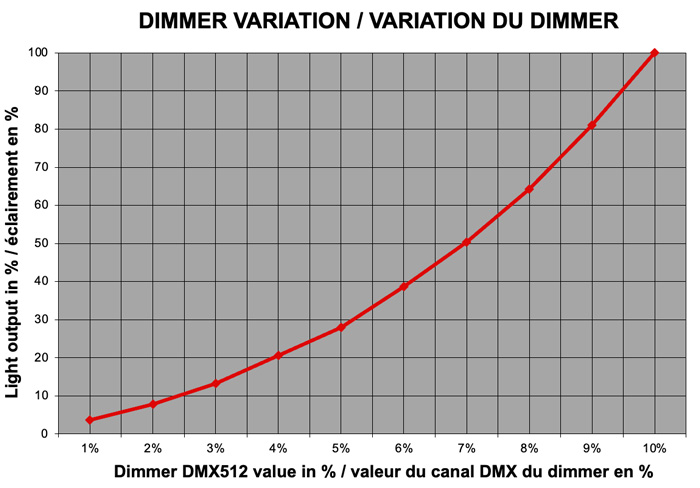
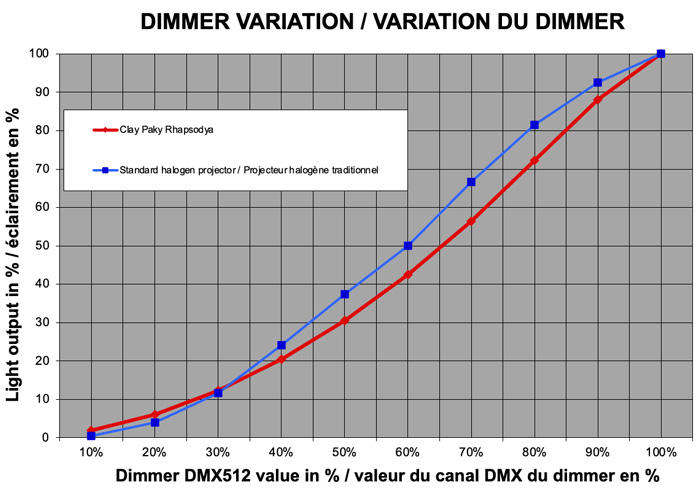
Claypaky has redesigned the cooling system under the name Tonedown™. It uses a large radiator and fans and has 4 modes: Silent, Standard, Performance and Fan off when an intimate moment requires absolute silence. Since the base unit of the fixture does not require any fan, there is no risk of white noise or annoying frequencies emanating from it.
The photometric measurements
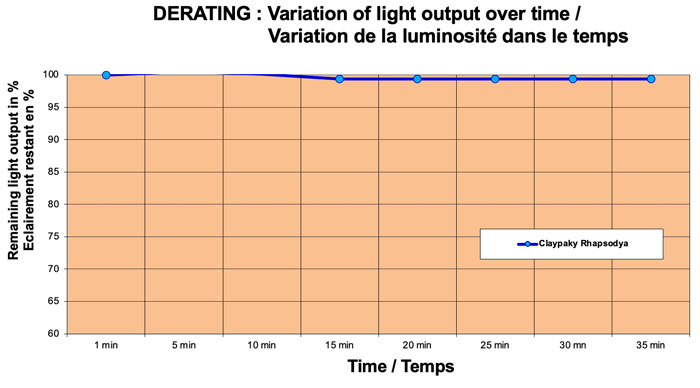
We start our measurements with the derating curve, fixture set in High Brightness mode which favors light output, in white 5600K and at full power.
During warm-up, the light attenuation does not even reach 1%: 0.6%, which is exceptional and poves a remarkably efficient cooling system. This stability of light output, in all circumstances, is ultra-important during video recording or broadcasting.
Measurements with a 20° beam
For our 20° “reference” measurement, we measure an illuminance at the center 5 meters from the target after a few minutes of 8,076 lux (8,130 lux cold). The flux reaches 17,380 lumens (17,490 lm cold). The light intensity curve is regular.
Measurements at the tightest sharp-edged beam
The zoom set to the tightest focus projects a beam angle of 6.8°. The illuminance in the center when “hot” is 48,130 lux (48,430 when cold) and the output becomes 11,040 lumens (11,108 lm when cold).
Measurements at the widest sharp-edged beam
The projection angle for the widest sharp-edged beam is equal to 62°! The illuminance in the center is then 950 lux (956 lux when cold) and the flux is 16,670 lumens (16,770 when cold). The light intensity curve is very regular.
Control and DMX channels
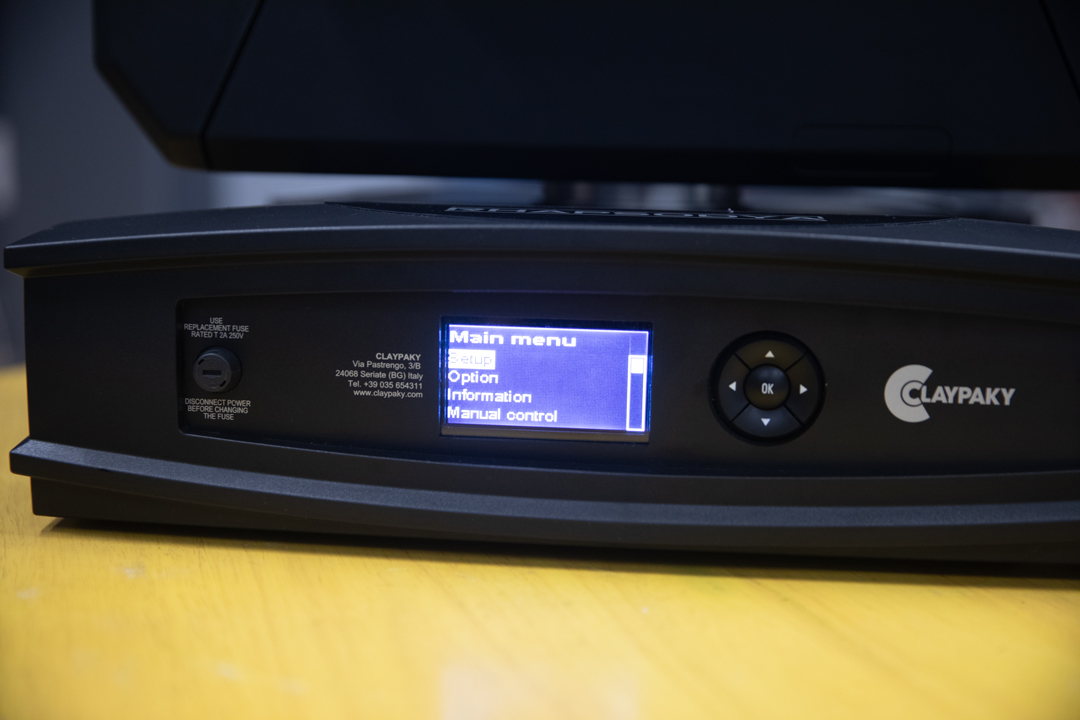
There are 3 DMX modes available in the menu: 62 channels for total control of each parameter, 54 channels in optimized standard mode, and 46 channels for simplified mode + separate control of the LED engine (20 channels) to use each LED string independently.
The menu uses an LCD display with battery backup, operating memory service log, standalone operation with one editable program, and a built-in analyzer for easy troubleshooting.
Technical specifications and connectors
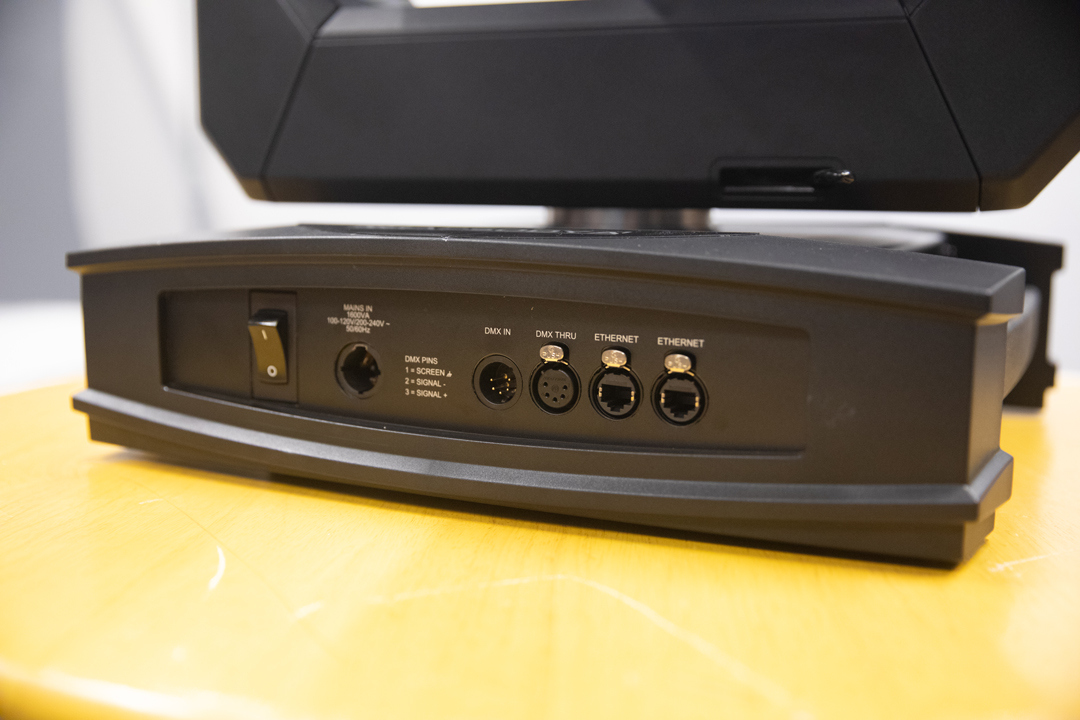
Claypaky has not neglected the digital aspect. Rhapsodya integrates a web server allowing remote configuration and real-time monitoring. The control protocols are numerous: DMX-RDM, ArtNet, sACN, MA Net2, and optional CRMX Lumen Radio wireless via 5-pin XLR IN/OUT, RJ45 IN/OUT, and PowerCON True1 connectors for power.
The connection distance between 2 fixtures can reach up to 100m via RJ45. An Epass™ Ethernet pass-through switch maintains network connectivity when the device does not have power.
Rhapsodya is fully compatible with CloudIO, a compact box connected to the proprietary Claypaky cloud which interfaces in the middle of a DMX chain to control the connected devices: up to 31 fixtures.
CloudIO analyzes fixtures, breakdowns, and usage histories, which is particularly useful to rental companies, to ensure the necessary maintenance after a service or tour. The CloudIO also allows you to calibrate on-site the flow and color temperature of all the fixtures in a lighting kit, regardless of the age or brand of your fixtures.
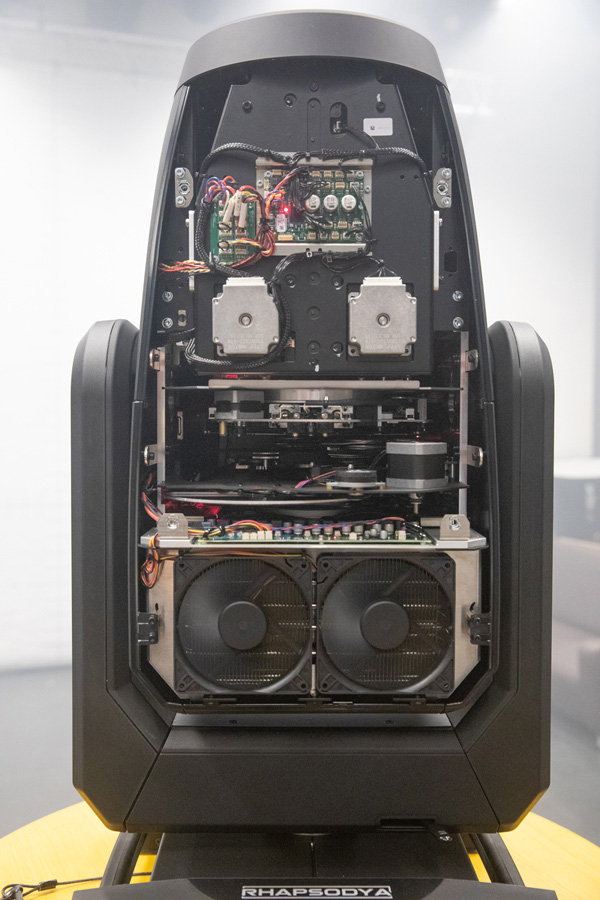
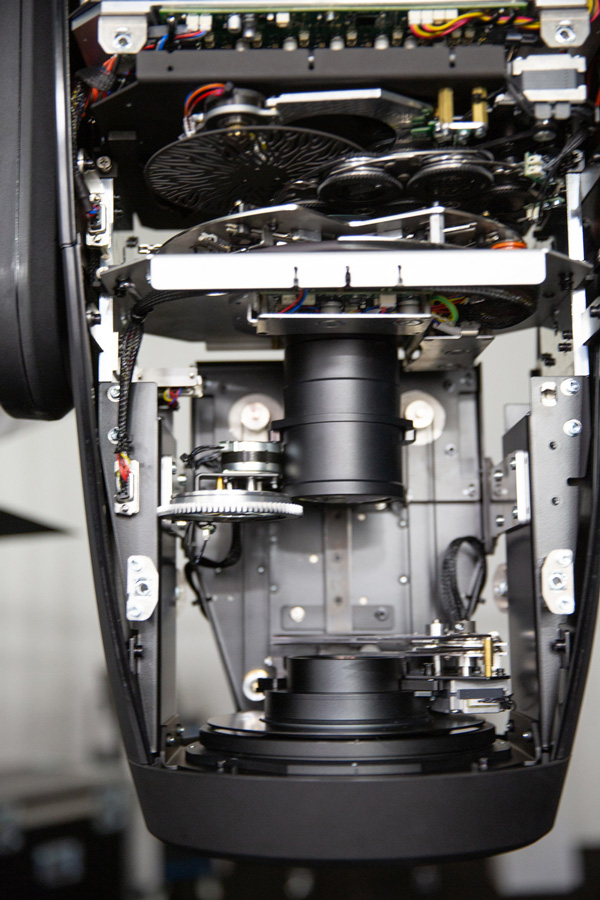
Controlling and addressing
Built-in Web Server: Remote configuration, real-time monitoring, firmware update, diagnostics
Pan & tilt: 16 bits, Precision: ±0,12°
CMY: 8 or 16 bits
Mouvement and rotation of framing module: 8 bits
Positioning of rotating gobo wheels: 8 or 16 bits
Indexing and rotation of gobos: 8 or 16 bits
Indexing and rotation of the prism: 8 or 16 bits
Iris: 8 bits
Prisme: 8 bits
Frost: 8 or 16 bits
Zoom: 8 or 16 bits
Focus: 8 or 16 bits
Dimmer: 8 or 16 bits
Blades/Shutters (framing): 8 or 16 bits
Video presentation
Training
Explore the tutorials provided by the Claypaky teams to exploit the full potential of Rhapsodya, to learn the special functions. There are also training centers in France such as the CFPTS, LC formations or Oliverdy, for example, which will allow you to acquire a complete understanding of how fixtures work, and to discover programming techniques and creating lighting effects. Obtain recognized certifications to validate your skills and boost your creativity.
Conclusion
On opera or theater stages, where every detail counts, we have seen that Rhapsodya offers very beautiful brightness and appreciable versatility. It can light complex sets, highlight actors, and create lighting effects adapted to each scene. Its ability to produce uniform light will make the difference. What truly sets the Rhapsodya apart is its ability to combine power and precision without compromising on quality. In a sector where technical excellence must serve artistic creation, this fixture sets new standards.
The Rhapsodya undeniably represents a leap forward in live performance lighting. Its exceptional colorimetry and versatility make it a valuable tool for the most demanding. Despite its significant weight, it has established itself as a reference on major theater and opera stages and TV studios. Despite some desirable areas for improvement, particularly in terms of ergonomics, the Rhapsodya perfectly embodies Claypaky’s commitment to excellence.
Claypaky once again proves its ability to innovate while remaining faithful to its values of quality and reliability. The Rhapsodya is not just a lighting fixture: it is a new chapter in the history of professional stage lighting.
 What we like:
What we like:
- The colors and their output,
- The range of the zoom,
- Its positioning precision.
 What we liked less:
What we liked less:
- Its weight
- The design of the base unit
General specifications
For more information: the Claypaky website



